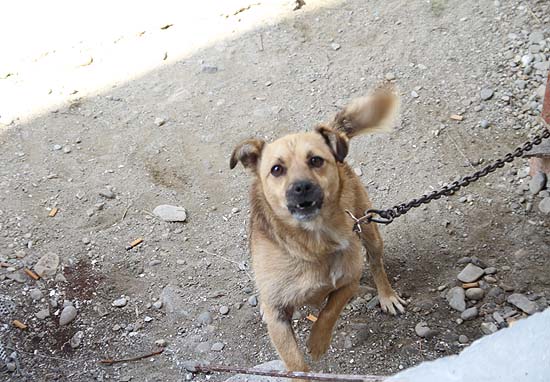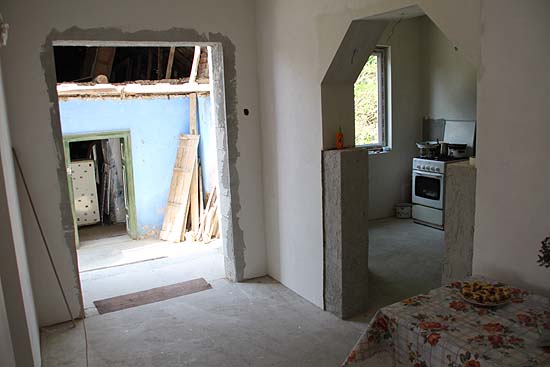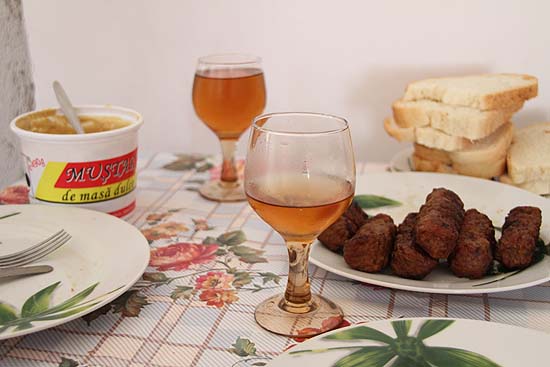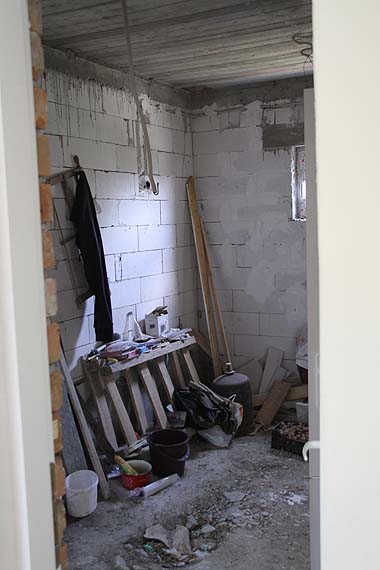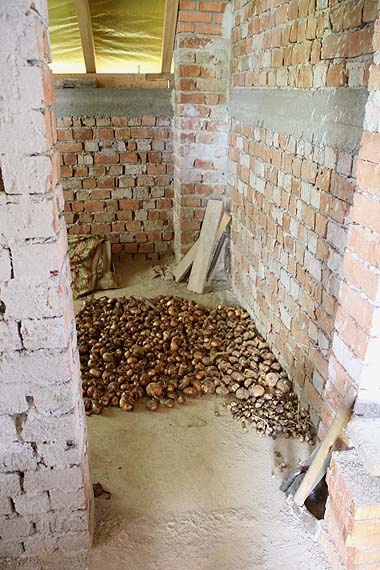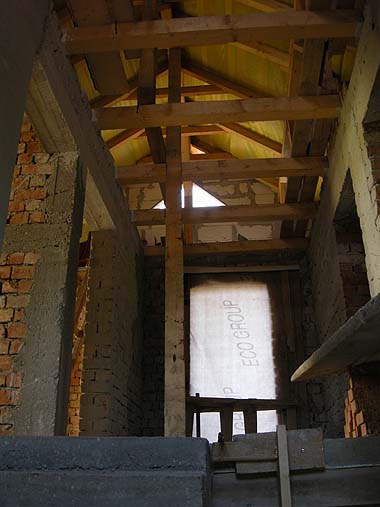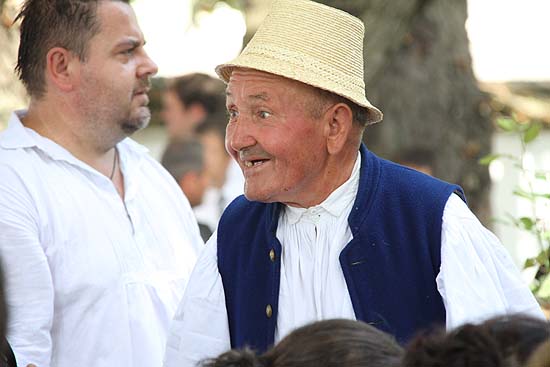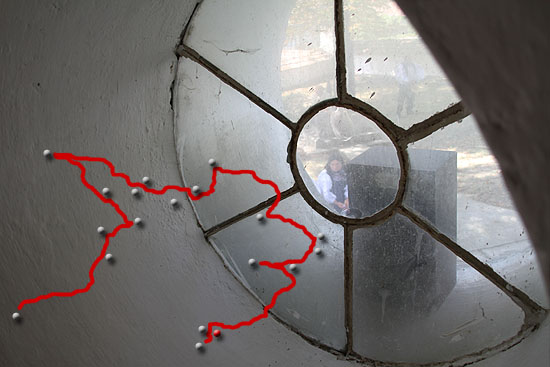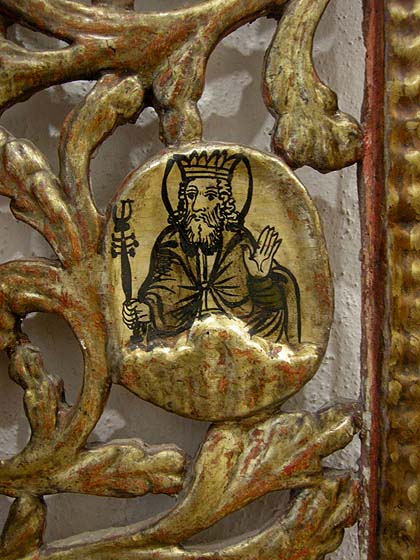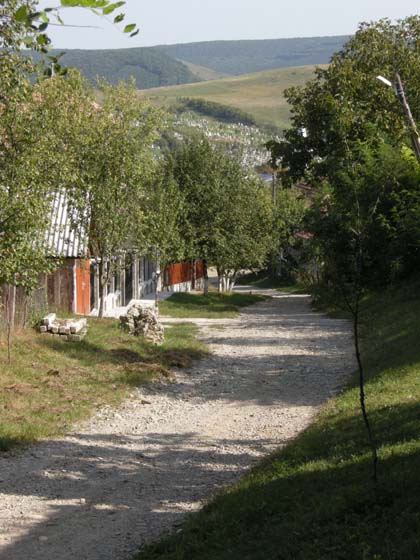
After the Bartholomew’s Day service and commemoration in the Transylvanian Szék (be sure to check this post if you haven’t yet done so!) we climb up to Felszeg, “the Upper Quarter”, to see the houses that fell into ruin in last July, and then descend to the market place to see in person – although we have already saw in photo – how our friends proceed with the building of their new house.
A brief summary of what we wrote about several times here, here and here. The incessant rains in last June repeatedly flooded the streets of Szék laying in the valley. At the same time the water rushing down the hillside also loosened the soil of the slope, and started a landslide in Felszeg which resulted in the collapse of six houses. The local press reported in detail about the catastrophe, illustrating with some photos the situation.
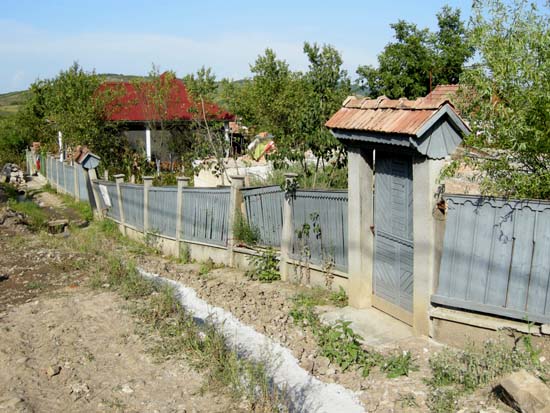 The signs of the landslide in Felszeg a few days ago. After demolishing the house the sight is not as frightening as one year ago, with the walls in ruins
The signs of the landslide in Felszeg a few days ago. After demolishing the house the sight is not as frightening as one year ago, with the walls in ruins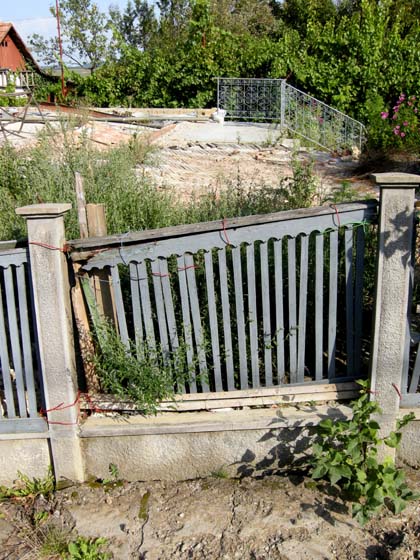
Our friends with two school-girls who remained without shelter could not hope for help from anywhere. The great deputy mayor of the town tried to gain some support through his contacts, but in the midst of the round-the-clock saving operations he got a heart attack and died. On receiving news of the disaster we announced a collection for the rebuilding here at Río Wang, and during the following months our readers gave together 2056 euros in all. This sum made it possible to our friends to buy a building site in the town – because on the plots slid it is forbidden to build any more, but they receive no compensation instead – and to start a new house. Meanwhile, someone managed to obtain some state support in the form of a limited amount of brick, cement and timber, but it would not have been enough for the building of a new house without the help of our readers, even if the material of the collapsed house was gradually demolished and built into the new one, and the stonemason head of the family, János was building it all alone while the rest of the family were earning for the rest of the materials: the wife, Rózsi undertaking housecleaning in Budapest, and the two girls, living with the grandparents, serving after school as auxiliary waiters in the local restaurant.
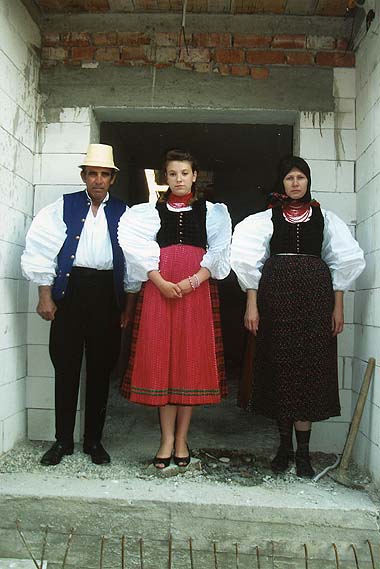
Until the winter they could pull up the walls and the top ring, and in March, after the thaw to set up the roof which is now covered with a plastic foil in lack of tiles. One of the two small rooms have already been made habitable, and even cozy, and they painted the walls of the other. The gas stove already works in the kitchen, but electricity, water and heating are not yet in the house. The work is suspended now: János is trying to earn the money for the additional materials as a mason in Cluj.
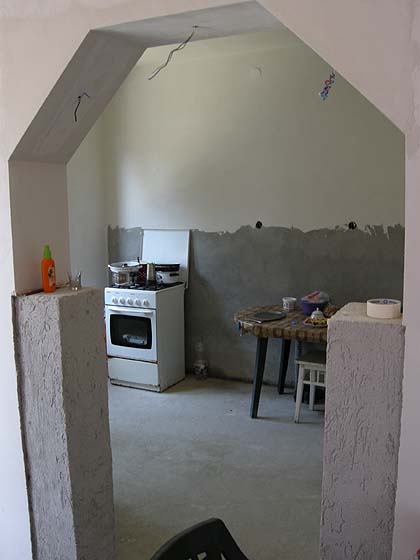
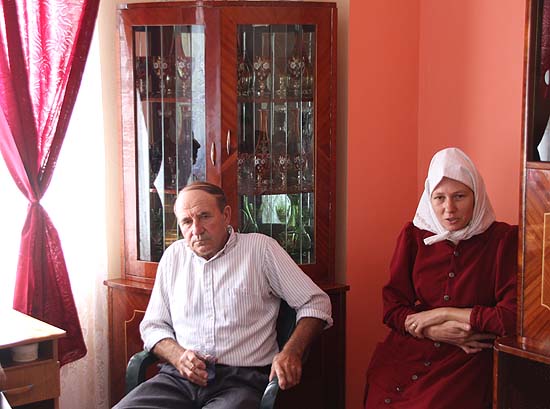 The pride of the house: the room which is already furnished with the furniture of the old house. The father of Rózsi, at whom the girls live now
The pride of the house: the room which is already furnished with the furniture of the old house. The father of Rózsi, at whom the girls live now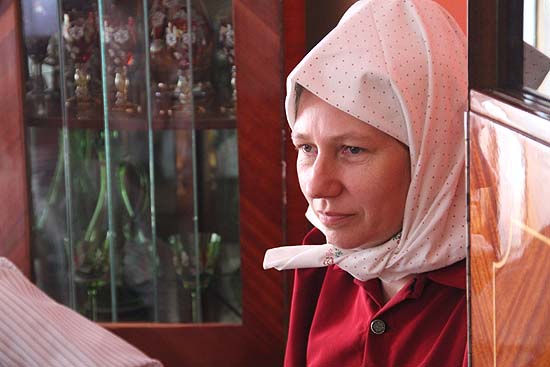
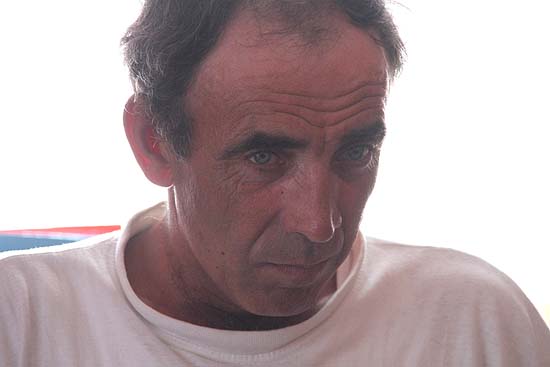
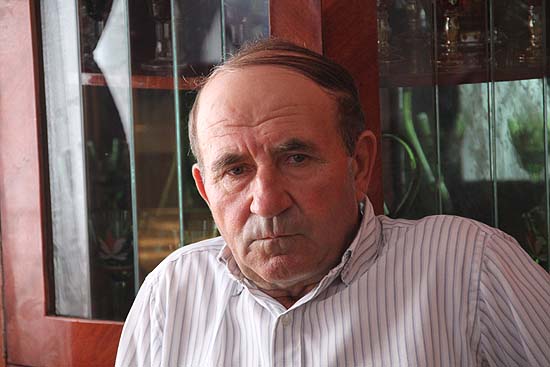
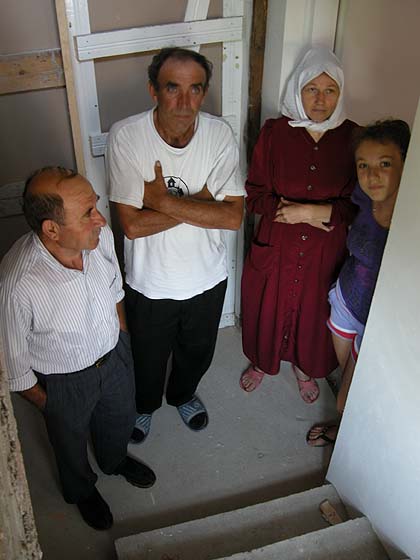
| By clicking here you can send via PayPal or from bank card any amount to the flood victims of Szék. We will send a receipt of each donation. Thank you for your help. • e-mail to us |
